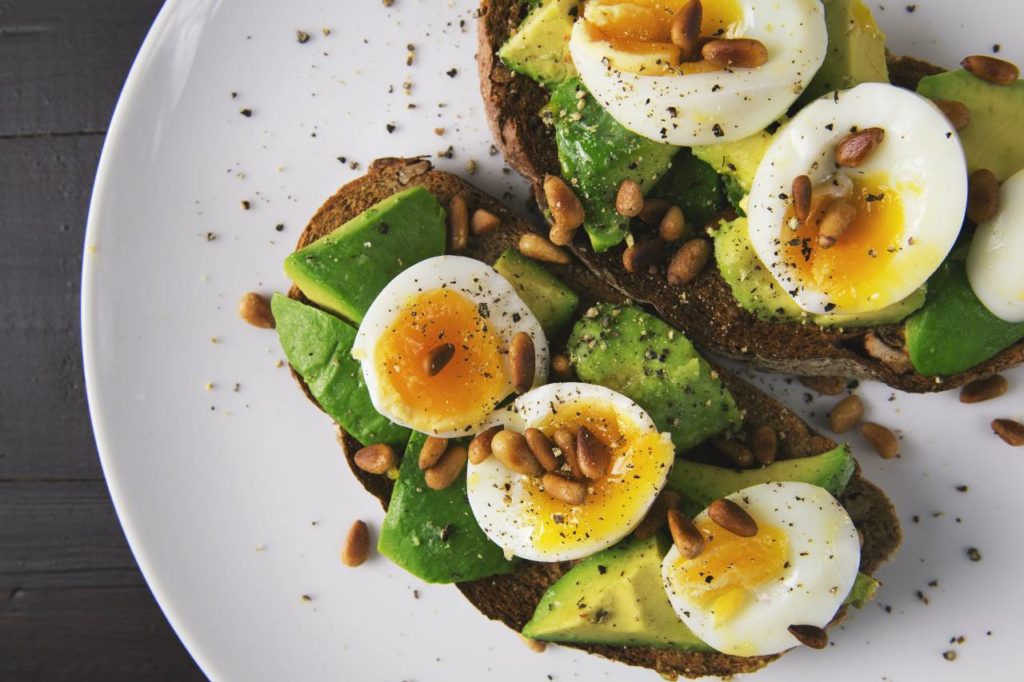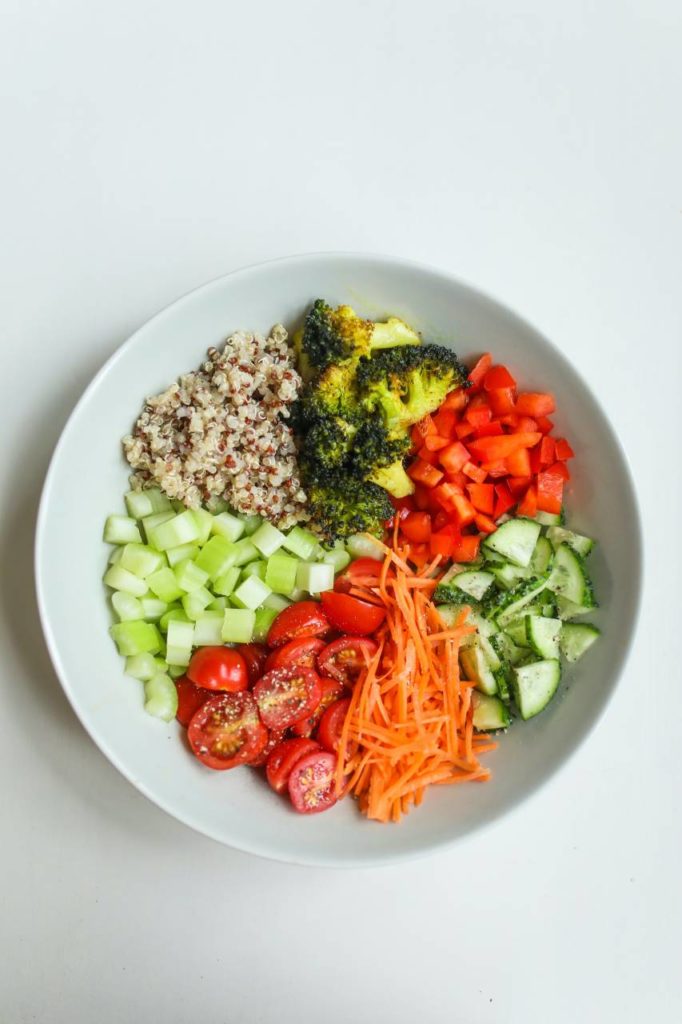As we get up there in age, it’s important that we begin to look at our health from a wider perspective. The human body is composed of a number of different systems, all of which affect one another. But did you know that one system affects all of the others more drastically than its counterparts?
What we eat has the ability to impact every part of our health, both mental and physical. As such, your diet is going to be one of the most important things to take care of in your 40s and beyond.
In this article we’re going to cover the 5 best diets for men over 40 to help improve or maintain health. Check them out below!
What do we mean by “diet”?
For many men, regardless of their age, the word “diet” is a bit of a turnoff. When we think of a diet, we generally think of something that’s low in calories, and subsequently, flavor. Unfortunately, fad diets like the keto diet and the Atkins diet have dominated the space for years. However, this is not the approach you should be taking.
When we talk about diet, we’re really talking about a lifelong approach to eating healthily. A diet should be how you intend on eating for the rest of your life, and modifying your diet should be focused on your overall health, not just losing weight.
So, what are the best diets for mature men, then? Well, we’re going to cover a few diets that are sustainable (meaning that you can stick to them), and that will improve your health the longer you adhere to them.
Diet 1: The Mediterranean Diet
When it comes to great diets, the Mediterranean diet is one of the most highly talked about. It’s recommended for just about anyone, but it has a significant place for men over 40.
This diet originates in the Mediterranean, as the name implies. It comes with a number of health benefits that have been observed in Mediterranean communities, including longer life and cardiovascular health when paired with an active lifestyle.

Benefits of the Mediterranean Diet
The Mediterranean diet has been researched fairly extensively, and the following benefits have been observed in those who follow this diet:
- Better Heart Health: Studies have shown that consistently following the diet improves heart health and prevents plaque buildup
- Healthy Blood Sugar Levels: The Mediterranean diet can lower blood sugar levels over time through the consumption of nutrient dense foods and natural sugars
- Cognitive Health Improvements: Individuals who adhere to the Mediterranean diet for longer periods of time show reduced cognitive decline as they progress in age
What’s on the Menu
When you’re eating a Mediterranean diet, these are the following foods you can eat regularly, occasionally, and rarely:
- What to Eat Regularly: Fruits, vegetables, nuts, seeds, legumes, potatoes, whole grains, fish, seafood, herbs, spices, extra virgin olive oil
- What to Eat Occasionally: Poultry, eggs, dairy
- What to Eat Rarely: Red meat, refined sugars, added sugars, processed meats, refined grains, refined oils
Check out these Mediterranean recipes.
Diet 2: The DASH Diet
Some diets are a bit more targeted than others, and that’s okay. We all have different health predispositions, and as such, we have to take unique approaches to eating in a healthy manner. The DASH diet is specifically focused on high blood pressure, or hypertension. DASH actually stands for “Dietary Approaches to Stop Hypertension.”
High blood pressure affects nearly half of all men in the United States according to the CDC, so this dietary approach may be more useful than you’d think.

The Benefits of the DASH Diet
Of course, the biggest benefit of the DASH diet is lowered blood pressure. This makes sense, since this diet was created to battle hypertension, after all. However, it may improve other aspects of your health, too, including:
- Lower Risk of Some Cancers: The DASH diet has been shown to reduce the likelihood of colorectal cancer
- Reduces the Risk of Diabetes: DASH has been linked to a lower risk of Type 2 diabetes
- Reduces Metabolic Syndrome Risk: This diet has been shown to reduce metabolic syndrome risks up to 81% in individuals
What’s on the Menu
When you’re following the DASH diet, you aren’t going to find a list of foods that are off-limits. Instead, you’re going to be advised to avoid salt, the main ingredient that increases blood pressure. You’re also going to be given recommended serving amounts of food groups for your daily consumption. For the most part, this is what’s recommended:
- 6 to 8 servings of whole grains per day
- 4 to 5 servings of vegetables per day
- 4 to 5 servings of fruits per day
- 2 to 3 servings of dairy per day
- Less than 6 servings of lean chicken, meat, and fish per day
- 4 to 5 servings of nuts, seeds or legumes per week
- 2 to 3 servings of fats or oils per day
- 4 to 5 servings of candy or added sugars per week
Check out these DASH diet recipes.
Diet 3: The Mayo Clinic Diet
When it comes to sustainable healthy eating, the Mayo Clinic is a leading authority. Their diet is a solid entry into a healthy, lifelong diet that can be followed. However, it may feel like a fad diet at first.
This diet’s main focus is weight loss, and it’s broken up into two phases. The initial phase focuses on cutting out food and reducing your weight, while the second phase focuses on maintaining it.
Benefits of the Mayo Clinic Diet
The Mayo Clinic Diet focuses on changing your diet for life, and includes the following benefits:
- Weight Loss: Being at a healthy weight is going to improve your overall health
- Improved Heart Health: The Mayo Clinic Diet requires exercise, which will improve heart health
- Decreased Risk of Cancer and Heart Disease: This diet encourages eating plenty of fruits and veggies, which have been shown to lower the risk of cancer and heart disease
What’s on the Menu
As mentioned previously, the Mayo Clinic Diet has two phases, with different restrictions in each. These are outlined below:
- Phase 1 – “Lose It!”: No refined or added sugars, or alcohol are allowed throughout Phase 1, which lasts two weeks. Calories are capped at 1,600 calories per day for women, and 1,800 calories for men, promoting weight loss.
- Phase 2 – “Live It!”: Calories are reduced further, with occasional sugars and alcohol added back into the mix. The idea is to hit your goal weight, then increase calorie intake to maintain the healthy weight you’ve reached.
Check out the Mayo Clinic Diet program.
Diet 4: The Flexitarian Diet
This portmanteau is a combination of the words “flexible” and “vegetarian,” indicating what kind of foods you can expect to eat. Again, this is less of a fad diet, and more based on keeping an eye on the things that you eat, much like the Mediterranean diet listed above.
Being a flexitarian means focusing on eating plant-based proteins rather than those sourced from animals for some meals. Most recommend that when you’re first approaching the flexitarian diet, you start slowly, and forgo meat twice a week to begin with. Then, as you continue to change your diet, continue to substitute meat products with plant-based proteins.

Benefits of the Flexitarian Diet
Because the flexitarian diet is focused on substituting better foods for meats, there are some great health benefits to adhering to this way of eating:
- Weight Loss: Plant-based proteins have a lower fat content than the meats that they’re replacing in most cases
- Decreased Risk of Diabetes: Eating more natural sugars, and more plants in general, can help balance your intake of bad sugars
- Decreased Risk of Heart Disease: Less fat from animal products means less risk of issues in cardiovascular health, including heart disease
What’s on the Menu
Being a flexitarian isn’t about completely cutting out food, rather, it’s about replacing them to achieve a healthier diet overall. As such, here’s what you should be focusing on as you approach the flexitarian diet:
- What to Eat Regularly: Fruits, vegetables, beans, lentils, tofu, chickpeas, edamame, whole grains, plant-based “dairy”, eggs, nuts, extra virgin olive oil, herbs, spices
- What to Eat Occasionally: Dairy products, fish, seafood
- What to Eat Rarely: Red meat, poultry, refined grains, refined sugars, added sugars
Explore these flexitarian diet recipes.
Diet 5: The MIND Diet
A combination of the Mediterranean diet and the DASH diet, the MIND diet focuses on cognitive health. This is an especially great diet for aging men, as it aims to reduce dementia and cognitive decline as we age. Because it is a combination of two of the diets listed above, we’ll briefly cover what you need to know.

Benefits of the MIND Diet
The MIND diet aims to prevent cognitive decline, but there are a number of other benefits you’ll see when you adhere to it:
- Lowered Blood Pressure: The DASH diet reduces hypertension, as does the MIND diet
- Reduced Risk of Heart Disease: Both the Mediterranean and DASH diet contribute to this benefit
- Reduced Risk of Diabetes: This diet focuses on eating natural sugars, which reduces the chance of diabetes greatly
- Supports Brain Health and reduced loss cognitive function as you get older
What’s on the Menu
The MIND diet provides a list of foods that you should be eating on a regular basis, and another of foods to avoid entirely. These are listed below:
- 10 Foods to Eat: Green leafy vegetables, other vegetables, berries, nuts, olive oil, whole grains, fish, beans, poultry, wine
- 5 Foods to Avoid: Butter or margarine, cheese, red meat, fried food, pastries and sweets
Discover MIND diet recipes.
Finding the Right Diet Takes Time
When you’re looking for the best diet for your health, it’s going to take some time. Start by trying out some of these diets based on your health needs, and do your best to stick with them. A diet should be a lifestyle change, not a quick fix.
Sources
- Mediterranean Diet Reduces Atherosclerosis Progression in Coronary Heart Disease: An Analysis of the CORDIOPREV Randomized Controlled Trial
- Mediterranean Diet, Alzheimer Disease Biomarkers and Brain Atrophy in Old Age
- How does Plant-Forward (Plant-Based) Eating Benefit your Health? | American Heart Association
- Dietary approach to stop hypertension (DASH): diet components may be related to lower prevalence of different kinds of cancer: A review on the related documents
- Dietary Approaches to Stop Hypertension (DASH) Dietary Pattern Is Associated with Reduced Incidence of Metabolic Syndrome in Children and Adolescents




